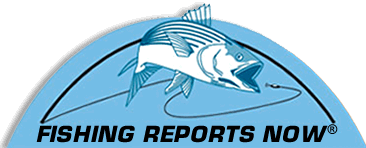Could Lengthen Fluke Season
And Change Sea Bass Regs
From the Atlantic States Marine Fisheries Commission:
FOR IMMEDIATE RELEASE, APRIL 18, 2013
PRESS CONTCT, TINA BERGER, 703.842.0740
ASMFC Summer Flounder,
Scup, and Black Sea Bass Board
Approves Addendum XXIV
New York & New Jersey May Modify Regulations to Access Additional Fish
Arlington, VA – The Atlantic States Marine Fisheries Commission’s Summer Flounder, Scup and Black Sea Bass Management Board approved Addendum XXIV to the Summer Flounder Fishery Management Plan, establishing a mechanism to allow states access to the 2013 summer flounder recreational harvest limit (RHL) that is projected to not be harvested. The Board approved proposals from two states – New York and New Jersey – to access the available RHL. New York may decrease its minimum size limit to 19 inches (from 19.5 inches) with a fishing season of May 1 – September 29, while New Jersey may extend its current fishing season (May 18 – September 16) by up to 11 days. The Addendum only applies to the 2013 fishery.
“The Board’s action seeks to address the concerns of states, such as New York and New Jersey, who feel that their states have been disadvantaged under the current management system,” stated Board Chair David Simpson from Connecticut. “While Addendum XXIV provides immediate relief to those states, the Board is committed to finding a long-term solution for the 2014 fishery and beyond.”
The Addendum responds to an unintended consequence of using conservation equivalency (e.g., state-specific recreational management measures) to stay within the annually established coastwide RHL for summer flounder. Although the shift away from coastwide management to state conservation equivalency addressed the interests of some states, it created difficulties for other states as overages occurred. While conservation equivalency provided greater flexibility for individual states to set their limits from year to year, state targets were based upon the 1998 estimate of harvest from the Marine Recreational Fishery Statistics Survey. The FMP did not provide the flexibility to adjust state harvest targets or the management strategy except through the addendum process. This resulted in ever increasing size limits, reduced bag limits, and shorter seasons for most of the states while the stock was at a low level and recovering. However, the impact of these ever-restrictive measures seemed to affect New York the most, where the size limit reached 21 inches by 2009, which also saw a very short season including mid-season closure. In 2012, with a fully recovered stock, New York’s minimum size (19.5 inches) was at least one inch higher than any other state, one and a half inches higher than its Long Island Sound bordering state, Connecticut and two inches greater than its ocean / New York Harbor bordering state, New Jersey.
The Board also approved a technical addendum to use the final Marine Recreational Information Program (MRIP) 2012 estimate of black sea bass mean weight to convert the recreational harvest limit from pounds to number of fish. This change results in a decrease (from 32% to 24%) in the reduction required for the northern region (Massachusetts to New Jersey). The preliminary mean weight estimate changed after the release of the final MRIP estimates (from 1.84 to 1.66 pounds per fish). The five northern states have indicated they will consider changes to their 2013 recreational black sea bass regulations over the next few weeks. States may make changes to their currently proposed regulations without Board approval if they employ the same methodology that was used to develop their current regulations. Any changes in methodology will require Technical Committee review and Board approval.
For more information, please contact Toni Kerns, ISFMP Director, at tkerns@asmfc.org or 703.842.0740.
----------
Tina Berger
Public Affairs Specialist
Atlantic States Marine Fisheries Commission
1050 N. Highland Street, Suite 200A-N
Arlington, VA 22201
703.842.0740
tberger@asmfc.org
www.asmfc.org
Healthy, self-sustaining populations for all Atlantic coast fish species or successful restoration well in progress by the year 2015.





